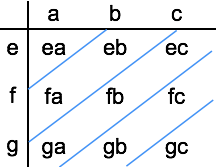
- Signals and Systems Tutorial
- Signals & Systems Home
- Signals & Systems Overview
- Signals Basic Types
- Signals Classification
- Signals Basic Operations
- Systems Classification
- Signals Analysis
- Fourier Series
- Fourier Series Properties
- Fourier Series Types
- Fourier Transforms
- Fourier Transforms Properties
- Distortion Less Transmission
- Hilbert Transform
- Convolution and Correlation
- Signals Sampling Theorem
- Signals Sampling Techniques
- Laplace Transforms
- Laplace Transforms Properties
- Region of Convergence
- Z-Transforms (ZT)
- Z-Transforms Properties
- Signals & Systems Resources
- Signals and Systems - Quick Guide
- Signals and Systems - Resources
- Signals and Systems - Discussion
Convolution and Correlation
Convolution
Convolution is a mathematical operation used to express the relation between input and output of an LTI system. It relates input, output and impulse response of an LTI system as
y(t)=x(t)∗h(t)
Where y (t) = output of LTI
x (t) = input of LTI
h (t) = impulse response of LTI
There are two types of convolutions:
Continuous convolution
Discrete convolution
Continuous Convolution

y(t)=x(t)∗h(t)
=∫∞−∞x(τ)h(t−τ)dτ
(or)
=∫∞−∞x(t−τ)h(τ)dτ
Discrete Convolution

y(n)=x(n)∗h(n)
=Σ∞k=−∞x(k)h(n−k)
(or)
=Σ∞k=−∞x(n−k)h(k)
By using convolution we can find zero state response of the system.
Deconvolution
Deconvolution is reverse process to convolution widely used in signal and image processing.
Properties of Convolution
Commutative Property
x1(t)∗x2(t)=x2(t)∗x1(t)
Distributive Property
x1(t)∗[x2(t)+x3(t)]=[x1(t)∗x2(t)]+[x1(t)∗x3(t)]
Associative Property
x1(t)∗[x2(t)∗x3(t)]=[x1(t)∗x2(t)]∗x3(t)
Shifting Property
x1(t)∗x2(t)=y(t)
x1(t)∗x2(t−t0)=y(t−t0)
x1(t−t0)∗x2(t)=y(t−t0)
x1(t−t0)∗x2(t−t1)=y(t−t0−t1)
Convolution with Impulse
x1(t)∗δ(t)=x(t)
x1(t)∗δ(t−t0)=x(t−t0)
Convolution of Unit Steps
u(t)∗u(t)=r(t)
u(t−T1)∗u(t−T2)=r(t−T1−T2)
u(n)∗u(n)=[n+1]u(n)
Scaling Property
If x(t)∗h(t)=y(t)
then x(at)∗h(at)=1|a|y(at)
Differentiation of Output
if y(t)=x(t)∗h(t)
then dy(t)dt=dx(t)dt∗h(t)
or
dy(t)dt=x(t)∗dh(t)dt
Note:
Convolution of two causal sequences is causal.
Convolution of two anti causal sequences is anti causal.
Convolution of two unequal length rectangles results a trapezium.
Convolution of two equal length rectangles results a triangle.
A function convoluted itself is equal to integration of that function.
Example: You know that u(t)∗u(t)=r(t)
According to above note, u(t)∗u(t)=∫u(t)dt=∫1dt=t=r(t)
Here, you get the result just by integrating u(t).
Limits of Convoluted Signal
If two signals are convoluted then the resulting convoluted signal has following range:
Sum of lower limits < t < sum of upper limits
Ex: find the range of convolution of signals given below

Here, we have two rectangles of unequal length to convolute, which results a trapezium.
The range of convoluted signal is:
Sum of lower limits < t < sum of upper limits
−1+−2<t<2+2
−3<t<4
Hence the result is trapezium with period 7.
Area of Convoluted Signal
The area under convoluted signal is given by Ay=AxAh
Where Ax = area under input signal
Ah = area under impulse response
Ay = area under output signal
Proof: y(t)=∫∞−∞x(τ)h(t−τ)dτ
Take integration on both sides
∫y(t)dt=∫∫∞−∞x(τ)h(t−τ)dτdt
=∫x(τ)dτ∫∞−∞h(t−τ)dt
We know that area of any signal is the integration of that signal itself.
∴Ay=AxAh
DC Component
DC component of any signal is given by
DC component=area of the signalperiod of the signal
Ex: what is the dc component of the resultant convoluted signal given below?

Here area of x1(t) = length breadth = 1 3 = 3
area of x2(t) = length breadth = 1 4 = 4
area of convoluted signal = area of x1(t) area of x2(t)
= 3 4 = 12
Duration of the convoluted signal = sum of lower limits < t < sum of upper limits
= -1 + -2 < t < 2+2
= -3 < t < 4
Period=7
∴ Dc component of the convoluted signal = area of the signalperiod of the signal
Dc component = 127
Discrete Convolution
Let us see how to calculate discrete convolution:
i. To calculate discrete linear convolution:
Convolute two sequences x[n] = {a,b,c} & h[n] = [e,f,g]

Convoluted output = [ ea, eb+fa, ec+fb+ga, fc+gb, gc]
Note: if any two sequences have m, n number of samples respectively, then the resulting convoluted sequence will have [m+n-1] samples.
Example: Convolute two sequences x[n] = {1,2,3} & h[n] = {-1,2,2}

Convoluted output y[n] = [ -1, -2+2, -3+4+2, 6+4, 6]
= [-1, 0, 3, 10, 6]
Here x[n] contains 3 samples and h[n] is also having 3 samples so the resulting sequence having 3+3-1 = 5 samples.
ii. To calculate periodic or circular convolution:
Periodic convolution is valid for discrete Fourier transform. To calculate periodic convolution all the samples must be real. Periodic or circular convolution is also called as fast convolution.
If two sequences of length m, n respectively are convoluted using circular convolution then resulting sequence having max [m,n] samples.
Ex: convolute two sequences x[n] = {1,2,3} & h[n] = {-1,2,2} using circular convolution

Normal Convoluted output y[n] = [ -1, -2+2, -3+4+2, 6+4, 6].
= [-1, 0, 3, 10, 6]
Here x[n] contains 3 samples and h[n] also has 3 samples. Hence the resulting sequence obtained by circular convolution must have max[3,3]= 3 samples.
Now to get periodic convolution result, 1st 3 samples [as the period is 3] of normal convolution is same next two samples are added to 1st samples as shown below:

∴ Circular convolution result y[n]=[963]
Correlation
Correlation is a measure of similarity between two signals. The general formula for correlation is
∫∞−∞x1(t)x2(t−τ)dt
There are two types of correlation:
Auto correlation
Cros correlation
Auto Correlation Function
It is defined as correlation of a signal with itself. Auto correlation function is a measure of similarity between a signal & its time delayed version. It is represented with R(τ).
Consider a signals x(t). The auto correlation function of x(t) with its time delayed version is given by
R11(τ)=R(τ)=∫∞−∞x(t)x(t−τ)dt[+ve shift]
=∫∞−∞x(t)x(t+τ)dt[-ve shift]
Where τ = searching or scanning or delay parameter.
If the signal is complex then auto correlation function is given by
R11(τ)=R(τ)=∫∞−∞x(t)x∗(t−τ)dt[+ve shift]
=∫∞−∞x(t+τ)x∗(t)dt[-ve shift]
Properties of Auto-correlation Function of Energy Signal
Auto correlation exhibits conjugate symmetry i.e. R (τ) = R*(-τ)
Auto correlation function of energy signal at origin i.e. at τ=0 is equal to total energy of that signal, which is given as:
R (0) = E = ∫∞−∞|x(t)|2dt
Auto correlation function ∞1τ,
Auto correlation function is maximum at τ=0 i.e |R (τ) | ≤ R (0) ∀ τ
Auto correlation function and energy spectral densities are Fourier transform pairs. i.e.
F.T[R(τ)]=Ψ(ω)
Ψ(ω)=∫∞−∞R(τ)e−jωτdτ
R(τ)=x(τ)∗x(−τ)
Auto Correlation Function of Power Signals
The auto correlation function of periodic power signal with period T is given by
R(τ)=limT→∞1T∫T2−T2x(t)x∗(t−τ)dt
Properties
Auto correlation of power signal exhibits conjugate symmetry i.e. R(τ)=R∗(−τ)
Auto correlation function of power signal at τ=0 (at origin)is equal to total power of that signal. i.e.
R(0)=ρ
Auto correlation function of power signal ∞1τ,
Auto correlation function of power signal is maximum at τ = 0 i.e.,
|R(τ)|≤R(0)∀τ
Auto correlation function and power spectral densities are Fourier transform pairs. i.e.,
F.T[R(τ)]=s(ω)
s(ω)=∫∞−∞R(τ)e−jωτdτ
R(τ)=x(τ)∗x(−τ)
Density Spectrum
Let us see density spectrums:
Energy Density Spectrum
Energy density spectrum can be calculated using the formula:
E=∫∞−∞|x(f)|2df
Power Density Spectrum
Power density spectrum can be calculated by using the formula:
P=Σ∞n=−∞|Cn|2
Cross Correlation Function
Cross correlation is the measure of similarity between two different signals.
Consider two signals x1(t) and x2(t). The cross correlation of these two signals R12(τ) is given by
R12(τ)=∫∞−∞x1(t)x2(t−τ)dt[+ve shift]
=∫∞−∞x1(t+τ)x2(t)dt[-ve shift]
If signals are complex then
R12(τ)=∫∞−∞x1(t)x∗2(t−τ)dt[+ve shift]
=∫∞−∞x1(t+τ)x∗2(t)dt[-ve shift]
R21(τ)=∫∞−∞x2(t)x∗1(t−τ)dt[+ve shift]
=∫∞−∞x2(t+τ)x∗1(t)dt[-ve shift]
Properties of Cross Correlation Function of Energy and Power Signals
Auto correlation exhibits conjugate symmetry i.e. R12(τ)=R∗21(−τ).
Cross correlation is not commutative like convolution i.e.
R12(τ)≠R21(−τ)
-
If R12(0) = 0 means, if ∫∞−∞x1(t)x∗2(t)dt=0, then the two signals are said to be orthogonal.
For power signal if limT→∞1T∫T2−T2x(t)x∗(t)dt then two signals are said to be orthogonal.
Cross correlation function corresponds to the multiplication of spectrums of one signal to the complex conjugate of spectrum of another signal. i.e.
R12(τ)←→X1(ω)X∗2(ω)
This also called as correlation theorem.
Parseval's Theorem
Parseval's theorem for energy signals states that the total energy in a signal can be obtained by the spectrum of the signal as
E=12π∫∞−∞|X(ω)|2dω
Note: If a signal has energy E then time scaled version of that signal x(at) has energy E/a.
